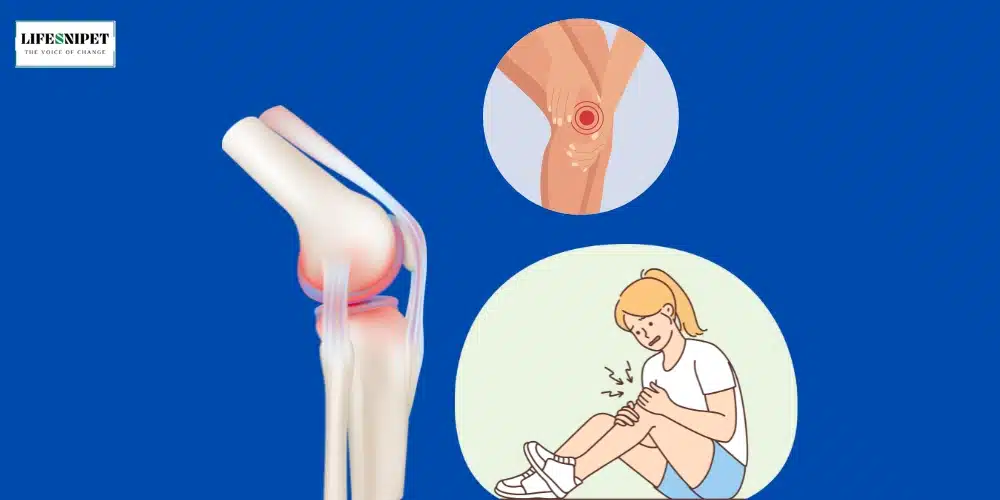Knee pain is a common ailment that affects millions of people worldwide. It can be caused by various factors, ranging from injuries to underlying medical conditions. In this comprehensive guide, I will delve into the causes, symptoms, and treatment options for knee pain. Whether you are experiencing occasional discomfort or chronic pain, this article will provide you with valuable insights to help you better understand and manage your knee pain.
Introduction to Knee Pain
The knee is a complex joint that plays a crucial role in our daily activities, such as walking, running, and jumping. It consists of bones, cartilage, ligaments, and tendons, all working together to provide stability and mobility. However, the knee is vulnerable to various injuries and conditions that can lead to pain due to its intricate structure.
Common Causes of Knee Pain
Some of the most common causes of knee pain include:
- Osteoarthritis: This degenerative condition occurs when the protective cartilage in the knee wears down over time, causing the bones to rub against each other.
- Ligament Injuries: Injuries to the ligaments in the knee, such as a torn ACL (anterior cruciate ligament) or MCL (medial collateral ligament), can result from sudden twists, direct blows, or overuse.
- 3. Meniscus Tears: The meniscus is a rubbery disc that cushions the knee joint. Tears in the meniscus can occur during activities that involve twisting or rotating the knee.
- Patellofemoral Pain Syndrome: This condition, also known as “runner’s knee,” is characterized by pain around the kneecap and is often caused by overuse, muscle imbalances, or improper tracking of the kneecap.
- Bursitis: Bursae are small fluid-filled sacs that help reduce friction between the bones, tendons, and muscles around the knee. Inflammation of these bursae can lead to knee pain.
Signs and Symptoms of Knee Pain
The signs and symptoms of knee pain can vary depending on the underlying cause. Common indicators of knee pain include:
- Pain: The most obvious symptom of knee pain is discomfort or pain in or around the knee joint. The intensity and location of the pain may vary depending on the cause.
- Swelling: Inflammation and swelling are common accompanying symptoms of knee pain. Swelling can occur due to fluid accumulation or inflammation of the knee joint.
- Stiffness: Many people with knee pain experience stiffness, making it difficult to fully bend or straighten the knee. This can affect mobility and make activities like walking or climbing stairs challenging.
- Instability: Knee pain can also cause a feeling of instability or weakness in the knee joint. This can make it difficult to bear weight on the affected leg or engage in activities that require balance.
- Limited Range of Motion: Reduced range of motion is another common symptom of knee pain. It may become challenging to fully extend or flex the knee joint, limiting your ability to perform certain movements.
Diagnosing Knee Pain
Proper diagnosis is crucial for determining the underlying cause of knee pain and developing an effective treatment plan. To diagnose knee pain, a healthcare professional may perform the following:
- Physical Examination: A physical examination of the knee joint can provide valuable insights into the source of pain. The doctor may assess the range of motion, stability, and any visible signs of swelling or inflammation.
- Medical History: Providing a detailed medical history, including any previous injuries or medical conditions, can help the healthcare professional narrow down the potential causes of knee pain.
- Imaging Tests: X-rays, MRIs, or CT scans may be ordered to visualize the internal structures of the knee joint and identify any abnormalities, such as fractures, torn ligaments, or cartilage damage.
- Laboratory Tests: Blood tests may be performed to rule out underlying medical conditions, such as rheumatoid arthritis or gout, which can cause knee pain.
Home Remedies for Knee Pain Relief
In many cases, knee pain can be managed and relieved with simple home remedies. Here are some effective strategies to alleviate knee pain at home:
- Rest and Ice: Taking sufficient rest and applying ice packs to the affected knee can help reduce inflammation and provide temporary relief from pain.
- Compression and Elevation: Wearing a compression bandage and elevating the leg can help minimize swelling and promote healing.
- Weight Management: Maintaining a healthy weight reduces the stress on your knees, which can alleviate knee pain.
- Strengthening Exercises: Gentle exercises that target the muscles around the knee can help improve stability and reduce pain. Consult with a physical therapist to learn appropriate exercises for your condition.
- Pain Medication: Over-the-counter pain relievers, such as acetaminophen or nonsteroidal anti-inflammatory drugs (NSAIDs), can temporarily alleviate knee pain. However, it is important to use them as directed and consult a healthcare professional if the pain persists.
Non-surgical Treatment Options for Knee Pain
If home remedies do not provide sufficient relief, non-surgical treatment options may be recommended. These treatments aim to reduce pain and improve function without the need for invasive procedures. Some common non-surgical treatments for knee pain include:
- Physical Therapy: A physical therapist can design a personalized exercise program to strengthen the muscles around the knee, improve flexibility, and enhance overall joint function.
- Medications: In addition to over-the-counter pain relievers, healthcare professionals may prescribe stronger pain medications or corticosteroid injections to manage knee pain.
- Assistive Devices: The use of assistive devices, such as knee braces or crutches, can provide support and stability to the knee joint, reducing pain and preventing further damage.
- Injections: In certain cases, injections of hyaluronic acid or platelet-rich plasma (PRP) may be recommended to provide lubrication and promote healing in the knee joint.
- Radiofrequency Ablation: This minimally invasive procedure uses radiofrequency energy to disrupt the nerve signals responsible for transmitting pain, providing long-lasting relief.
Surgical Treatment Options for Knee Pain
In cases where non-surgical treatments fail to provide adequate relief, surgical intervention may be necessary. The type of surgery recommended will depend on the underlying cause and severity of the knee pain. Some common surgical treatment options for knee pain include:
- Arthroscopy: This minimally invasive procedure involves using a small camera and specialized instruments to repair or remove damaged tissue in the knee joint.
- Partial or Total Knee Replacement: In severe cases of knee pain, where there is extensive damage to the joint, partial or total knee replacement surgery may be recommended. This involves replacing the damaged portions of the knee joint with artificial implants.
- Ligament Reconstruction: If a ligament in the knee is torn or damaged, surgical reconstruction may be necessary to restore stability and function.
- Cartilage Restoration: In cases of cartilage damage, procedures such as microfracture, cartilage transplant, or autologous chondrocyte implantation may be performed to promote cartilage regeneration.
- Osteotomy: This procedure involves reshaping the bones around the knee joint to relieve pressure and correct alignment issues, reducing knee pain.
Recovery and Rehabilitation for Knee Pain
Following surgical or non-surgical treatment for knee pain, rehabilitation is crucial to restore function, strength, and mobility. A comprehensive rehabilitation program may include:
- Physical Therapy: Under the guidance of a physical therapist, specific exercises and stretches will be prescribed to strengthen the muscles around the knee and improve the range of motion.
- Pain Management: Pain medications or other techniques, such as ice therapy or transcutaneous electrical nerve stimulation (TENS), may be used to manage post-operative pain.
- Assistive Devices: Crutches, walkers, or braces may be recommended during the initial stages of recovery to provide support and stability to the knee joint.
- Gradual Return to Activity: The healthcare professional will provide guidelines for gradually reintroducing activities and exercises to avoid overloading the knee joint and prevent re-injury.
- Lifestyle Modifications: Making certain lifestyle changes, such as maintaining a healthy weight, adopting proper body mechanics, and avoiding high-impact activities, can help prevent future knee pain.
Preventing Knee Pain
While some causes of knee pain may be unavoidable, there are steps you can take to reduce the risk of developing knee pain. Here are some preventive measures:
- Regular Exercise: Engaging in regular exercise that strengthens the muscles around the knee can help improve joint stability and reduce the risk of injury.
- Proper Form and Technique: When participating in physical activities or sports, ensure you use proper form and technique to minimize the risk of knee injuries.
- Warm-up and Cool-down: Before any physical activity, warm up with dynamic stretches to increase blood flow to the muscles. Afterward, cool down with static stretches to promote flexibility and prevent muscle tightness.
- Wear Appropriate Footwear: Wearing shoes that provide proper support and cushioning can help absorb shock and reduce stress on the knees.
- Listen to Your Body: If you experience any pain or discomfort during physical activities, it is important to listen to your body and take appropriate breaks or modify your movements to avoid exacerbating the pain.
Conclusion
Knee pain can significantly impact your daily life and limit your mobility. By understanding the causes, symptoms, and treatment options for knee pain, you can take proactive steps to manage and alleviate your discomfort. Consult a healthcare professional for an accurate diagnosis and personalized treatment plan. With the right approach, you can regain control over your knee health and enjoy an active, pain-free lifestyle.
FAQs
Q: How long does it take to recover from knee surgery?
A: The recovery time after knee surgery can vary depending on the type and complexity of the procedure. While some individuals may recover within a few weeks, others may require several months of rehabilitation before returning to normal activities. It is important to follow the post-operative instructions provided by your healthcare professional and attend regular follow-up appointments to monitor your progress.
Q: Can knee pain be a symptom of a more serious condition?
A: Yes, knee pain can sometimes be a symptom of an underlying medical condition, such as rheumatoid arthritis, gout, or an infection. If your knee pain is persistent, accompanied by other symptoms, or if you have a history of medical conditions, it is important to seek medical attention for a proper evaluation and diagnosis.
Q: Are there any natural remedies for knee pain?
A: While natural remedies may provide temporary relief, consulting with a healthcare professional for a proper diagnosis and treatment plan is important. Home remedies such as rest, ice, compression, and elevation can help alleviate symptoms. Additionally, maintaining a healthy weight, practicing low-impact exercises, and incorporating anti-inflammatory foods into your diet may help manage knee pain.
Q: Can knee pain be prevented?
A: While not all causes of knee pain can be prevented, there are steps you can take to reduce the risk. Regular exercise, proper form and technique during physical activities, wearing appropriate footwear, and listening to your body can all contribute to preventing knee pain. Additionally, maintaining a healthy weight and adopting lifestyle modifications can help reduce the strain on your knees and minimize the risk of developing knee pain.
Q: Are there any statistics about knee pain?
A: According to the Arthritis Foundation, approximately 27 million Americans suffer from osteoarthritis, a common cause of knee pain. Knee pain is a leading cause of disability among adults, with an estimated 25% of adults experiencing frequent knee pain. Furthermore, knee pain accounts for over 20% of all musculoskeletal complaints in primary care clinics. These statistics highlight the prevalence and impact of knee pain on individuals and society as a whole.

Welcome to LifeSnipet! At LifeSnipet, we’re your ultimate source for the latest health updates. Specializing in health and fitness-related diseases, we delve deep into Ayurvedic techniques, providing you with a comprehensive understanding of well-being. Explore our real-time updates, detailed articles, and ancient Ayurvedic wisdom for a holistic approach to health. Embark on a journey to a healthier, vibrant life with LifeSnipet – where your well-being is our priority!











